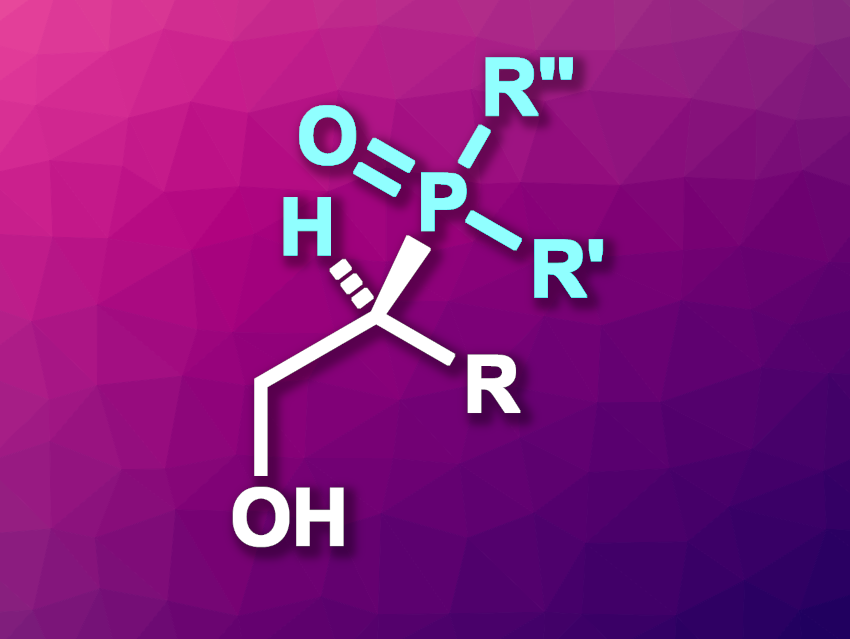Enantioselective reactions that involve the insertion of carbenes into C–H, O–H, or N–H bonds, etc. are useful in organic synthesis and can often be performed in a catalytic manner. Analogous catalytic asymmetric P–H insertion reactions, however, had not been achieved so far. The enantioselective synthesis of organophosphorus compounds can be useful, e.g., to obtain chiral ligands or pharmaceutically active molecules.
Peng Xie, Jun Jiang, Guangxi University, Nanning, China, and colleagues have developed the first catalytic asymmetric P–H carbene insertion reactions using diazo pyrazoleamides and H-phosphine oxides (general product structure pictured). The team’s approach is based on a combination of transition-metal catalysis and organocatalysis. They reacted the substrates in the presence of CuBr as the transition-metal catalyst, a chiral cinchona alkaloid-derived compound as the organocatalyst, and BaSO4. The reactions were performed in dichloromethane (DCM) at 0 °C.
The desired chiral β-hydroxyl phosphine oxides were obtained in good yields and high enantioselectivities. The team performed the reaction at the 1 mmol scale and obtained the desired product in a yield of 73 %. The researchers propose a mechanism that involves Cu(I) coordinating to the organocatalyst, which enhances its acidity and facilitates an enantioselective proton transfer process.
- Catalytic Asymmetric P–H Insertion Reactions,
Xiu Gu, Xiaoyu Mo, Wen-Ju Bai, Peng Xie, Wenhao Hu, Jun Jiang,
J. Am. Chem. Soc. 2023.
https://doi.org/10.1021/jacs.3c06906



